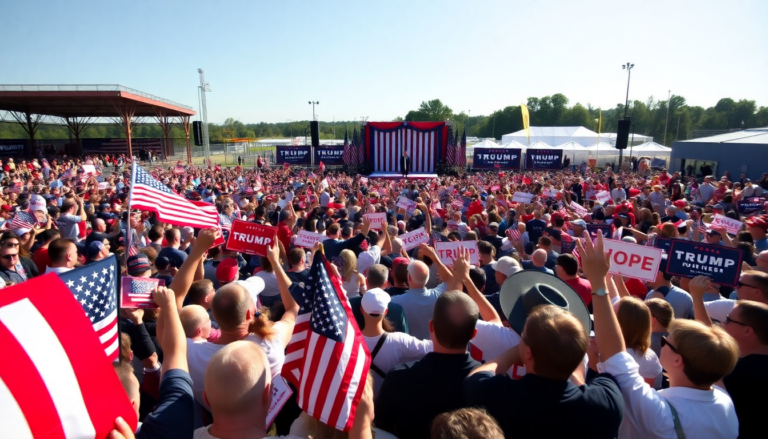Argomenti trattati
President’s rally and job promises
During a significant rally in Michigan, President Donald Trump reiterated his commitment to bringing jobs back to the United States. This event marked his first 100 days in office, a milestone he celebrated by addressing thousands of supporters. The rally, labeled an “achievement speech” by the administration, came at a time when Trump faced declining approval ratings and wavering consumer confidence.
Trump’s declaration of having the “most successful first 100 days of any administration in the history of our country” was met with both enthusiasm and skepticism. As he took to the stage, the President highlighted his administration’s efforts to tackle illegal immigration, restore the rule of law, and counter what he described as “woke lunacy.” However, he also took the opportunity to criticize former President Joe Biden and Vice President Kamala Harris, while continuing his long-standing feud with the media.
Impact of tariff policies
Shifting focus, Trump addressed the controversial tariff policies that have stirred unrest among industry leaders. Earlier that day, he signed an executive order aimed at alleviating some pressures from these tariffs, particularly concerning the automotive sector. This order prevents the stacking of various tariffs on auto part imports for vehicles manufactured in the US.
Trump has implemented substantial tariffs, including 25 percent on foreign auto imports and 10 percent on nearly all trade partners. These measures were intended to encourage industries to relocate back to the US, a claim he echoed during his speech. He stated, “They all want to come back to Michigan and build cars again,” attributing this desire to his tax and tariff policies.
Industry response and implications
The implications of Trump’s tariff policies are profound, especially in Michigan, home to the “Big Three” automakers: General Motors, Ford, and Stellantis. The automotive industry has expressed concern over the feasibility of manufacturing completely within the US, as Trump envisions. Notably, the United Auto Workers (UAW) union has shown support for the tariffs, believing they could ultimately bring jobs back to the country.
However, public sentiment appears to diverge significantly from the excitement displayed at the rally. Recent polls indicate a broader disapproval of Trump’s presidency, with figures showing that a majority of the public does not share the same enthusiasm as his supporters. This disconnect raises questions about the long-term viability of his policies.
Economic indicators and consumer confidence
Amidst the rally, the Conference Board released data revealing a significant drop in consumer confidence, which fell by 7.9 points in April. This decline is the lowest level recorded since the peak of the COVID-19 pandemic in May 2020 and reflects the uncertainty stemming from Trump’s tariff rollout. While no new trade deals have been established since the tariffs were introduced, Trump assured his supporters that officials from around the globe were eager to negotiate with him.
In a bid to bolster his economic agenda, Trump also criticized Federal Reserve Chair Jerome Powell, claiming he was not effectively managing the economy. He reiterated his calls for Congress to implement large tax cuts, a plan that nonpartisan analysts warn could escalate the national debt significantly.
Democratic response and public protests
In stark contrast to Trump’s rally, Congressional Democrats held their own counter-programming event on the Senate floor, labeling the past 100 days as “100 days of chaos.” They voiced concerns over the President’s actions, arguing that he has overstepped constitutional boundaries while the economy falters. Senator Richard Durbin criticized both Trump and Senate Republicans, insinuating that the latter are complicit in the ongoing turmoil.
Outside the venue of Trump’s rally, protests took place as demonstrators voiced their dissent, waving upside-down US flags and carrying signs proclaiming their opposition. This juxtaposition of fervent support and vocal opposition highlights the polarized political climate surrounding Trump’s presidency.

